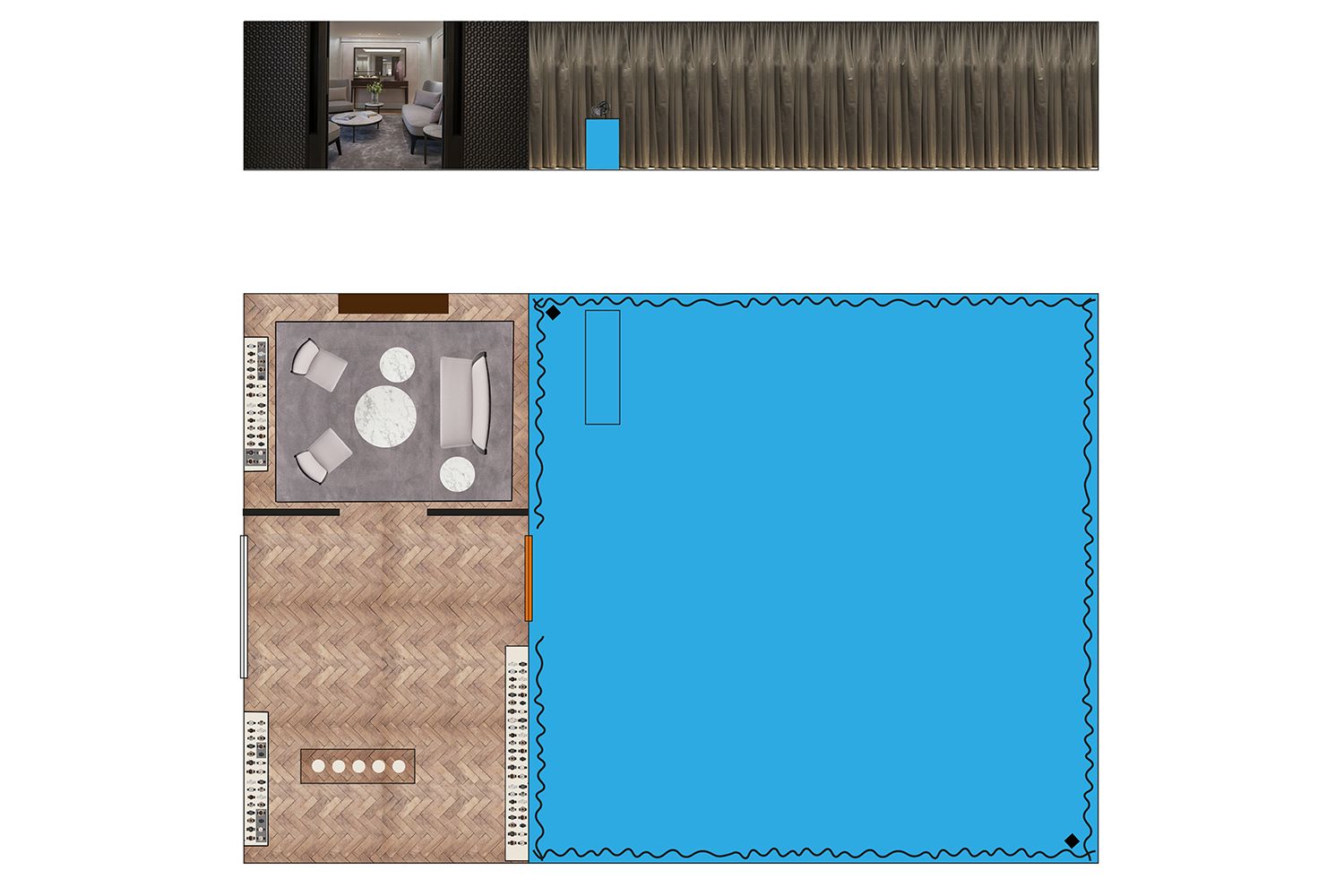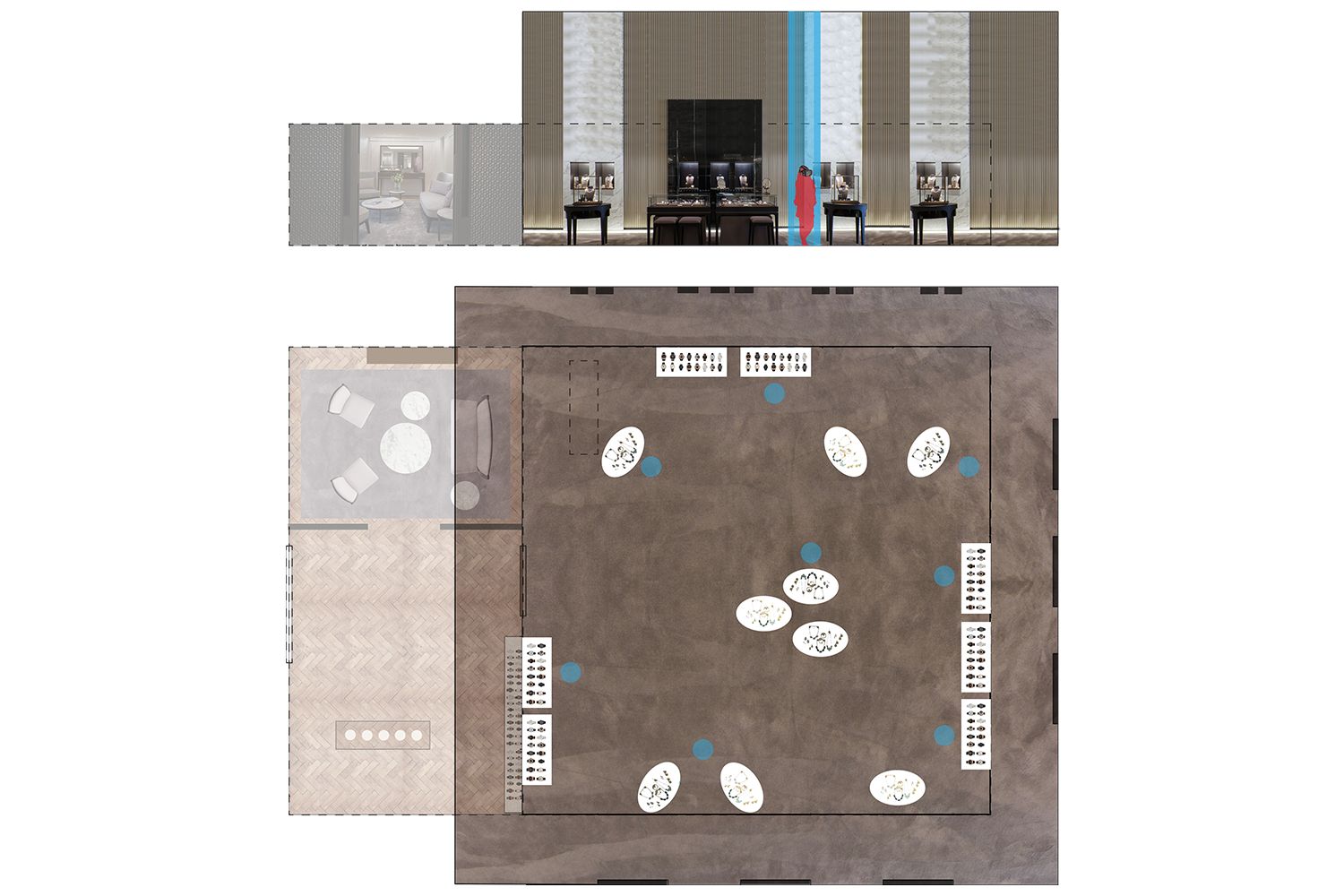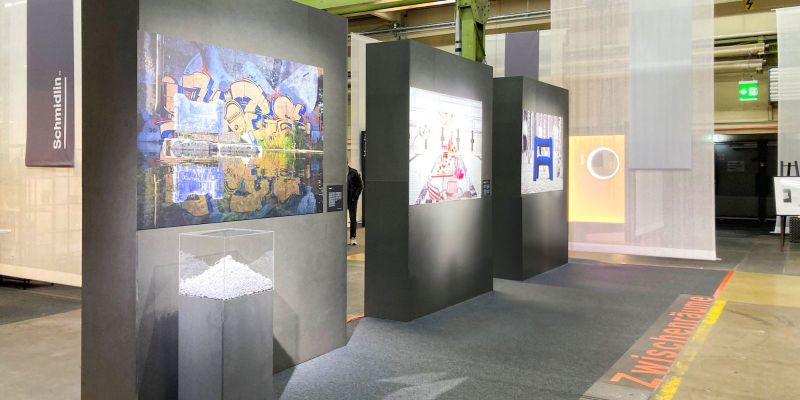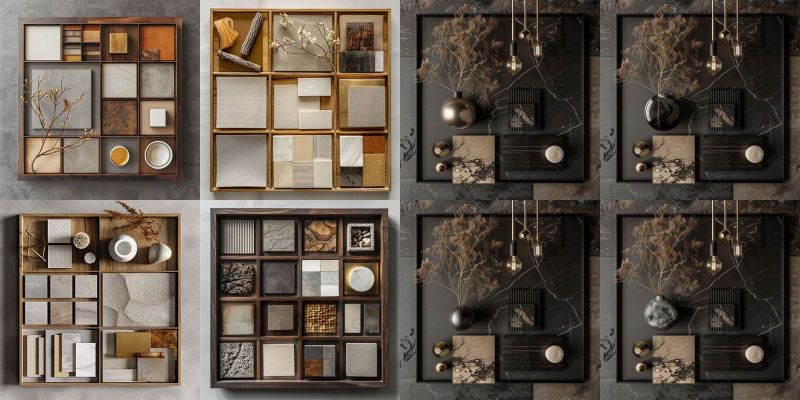28. February 2022
Retail goes hybrid
Digitalisation is not only impacting sales channels: it’s also changing what people expect from their shopping experience. Which is why, slowly but surely, retailers are bringing together the real and digital worlds.
Enhancing the bricks-and-mortar shopping experience with an online dimension has been about more than just e-commerce for a while. New technologies have lifted virtually all limitations to the imagination in creating hybrid shopping options and crafting unique brand experiences for customers.
Virtual reality in retail
Virtual reality (VR) is not only ideal for companies planning a new retail space (for more on that, see this Space Story): it is also a great tool for giving customers a memorable, real-life experience accompanied by sales staff.
Four years ago, DOBAS developed a concept that combines VR with pop-up retail. Rather than put time and money into planning and producing a conventional pop-up shop, we channel resources into the creation of a virtual showroom with corporate-compliant architecture. Aided by so-called stepstones, blue-box visitors can «hop» into other virtual worlds and immerse themselves more deeply into the story of a product, which enhances their experience with it. The concept is almost infinitely adaptable and can be perfectly tailored to a variety of target groups.
The luxury car brand Audi has been experimenting with virtual and augmented reality for several years. One of their efforts is called «Audi VR experience», which has been rolling out progressively in car dealerships around the world. With the help of VR glasses, customers can get a full visual experience of their individually customised car, down to the last detail (see header image). Referring to this new development, the company’s former Head of Digital Business Strategy/Customer Experience stated: «With this, we are taking the next step in our strategy to combine digital innovation with the strengths of the bricks-and-mortar dealership.». In September 2021, Audi talked about «holoride», a technology that uses VR content that adapts to the actual movements the car is making in real time, opening up a whole new world of entertainment possibilities for backseat passengers.
The Italian furniture maker Natuzzi also uses a form of mixed reality that blurs the line between the real and digital worlds even more. In Natuzzi’s New York showroom, customers put on a headset and enter into a virtual space where they can move the furniture around and, with the staff’s assistance, even adjust colours and materials. On special request, customers can also do a virtual furniture show in a rendering that looks like their own home.
Smartphone and shopping
Smartphones can be used for just about anything – and the retail sector is getting better and better at using that to its advantage. In 2018, the Chanel flagship store in Paris teamed up with e-commerce giant Farfetch to create a hybrid shopping experience. Chanel did not make this move because they wanted to enter the online marketplace; rather, they wanted to pursue storytelling via digital means as a way of inspiring their clientele and creating an even more personalised experience in their bricks-and-mortar shop.
The customer journey begins even before setting foot in the shop: Chanel customers download an app on their smartphone where they can browse runway looks, make a wish list and book a fitting in the flagship store. When they arrive there in person, a Chanel salesperson scans their QR code to pull up all the relevant information and shows them the pieces they selected in a mirror linked to the app.
The enhanced retail experience is clearly catching on: after a pilot phase on Rue Cambon that lasted several months, Chanel are planning to roll out the technology in other shops.
Playful displays
Innovative technologies have also made their way into shop windows. During the 2020 Christmas season, the luxury watch and jewellery retailer Bucherer had animated dwarves brightening up their display windows in various locations, inviting potential clientele to be part of two different Christmas stories in a humorous way.
To introduce the SS18 «Gucci Hallucination» collection, Gucci designed an interactive shop window as part of a larger digital campaign. Catalan painter Ignasi Monreal was brought on board to stage the collection, drawing inspiration from classic paintings such as John Everett Millais’s «Ophelia». People viewing the SS18 display window not only marvelled at the Monreal works brought to life, but could also scan a sticker with their smartphone linking them to more Gucci-related content about «Gucci Hallucination».
The examples named here are probably just the beginning. As technologies like VR and AR mature, the bricks-and-mortar experience is bound to continue evolving along with them, becoming more and more intertwined with digital technologies. We’re excited to see what the future will bring!
Explore More Space Stories
Space Story #43 | 17 October 2024
Our Aspiring Interior Designers at the neue raeume Trade Fair
Vivien Bucher and Rebecca Betschart are currently advancing their education as interior designers. As part of their further training, they conceptualised, planned, and implemented a trade fair stand for the neue raeume 2024 trade fair. An experience report.
Space Story #40 | 29 March 2024
Artificial Intelligence in Interior Architecture
Interior architect Verena Zaugg is currently examining the ways in which artificial intelligence (AI) can be used in design processes by testing out Midjourney and other programmes. What opportunities do such text-to-image tools provide? And what are their limits?




